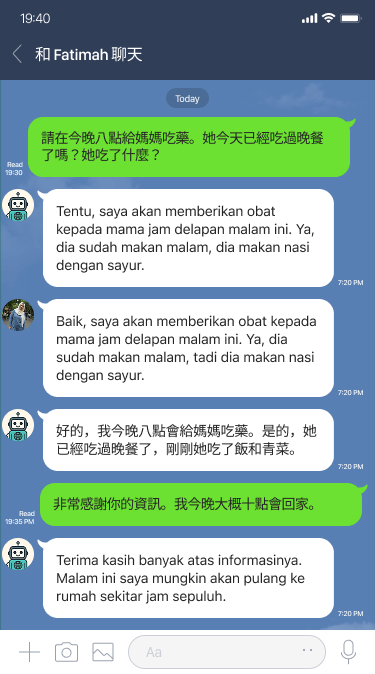Building understanding: How Taiwanese families & Southeast Asian caregivers can close communication gaps
Overcoming language barriers and cultural differences in daily care
In Taiwan, Southeast Asian caregivers are increasingly taking on the care of elderly people. Families benefit from 24-hour help, financial relief, and human attention. However, language barriers and cultural differences present major challenges in daily life. This article shows how communication problems arise, what consequences they have – and how they can be overcome through modern solutions like the Seloralabs Translation Service.
Benefits and Reality
Southeast Asian caregivers are indispensable for many Taiwanese households:
Round-the-clock care
relieves family members
Financially affordable
than local caregivers
Competence and patience
improve the quality of life for seniors
Emotional bond
Many caregivers become part of the family
Despite all the advantages, more than a third of families report problems in living together – in most cases due to language barriers.
Typical Challenges of Intercultural Communication
1. Multilingualism in Taiwan
Many seniors only speak Taiwanese or Hakka. For caregivers who have mostly learned only basic Mandarin, this creates a double language barrier.
2. Misunderstandings in daily care
Wrong medication administration, unclear meal times or hygiene easily lead to frustration and mistrust.
3. Emotional distance
Without a common language, caregivers often remain reserved and isolated, while seniors feel misunderstood.
4. Different daily habits
Hygiene, work discipline or eating habits differ culturally. Without clear communication, conflicts arise.
5. Adjustment and privacy
A stranger lives in the household. Only through clear agreements and language can trust grow.
Why Seloralabs Translation Service?
Many families use picture cards, gestures or translation apps, but these solutions are often unwieldy. Since family members usually work during the day and have hired a caregiver for this very reason, they are rarely at home. Therefore, written communication is crucial:
Directly in LINE
Family members write messages as usual, the caregiver receives them in their language.
No additional app
Everything runs in the existing chat environment.
Essential when absent
Even during working hours, clear instructions can be given and feedback received.
Real example from practice:

Real LINE chat conversation between a Taiwanese family and Indonesian caregiver Fatimah. The family writes in Mandarin, Fatimah reads automatically in Indonesian and responds in her language - the family receives the answer directly in Mandarin.
Family writes in Mandarin:
"請在今晚八點給媽媽吃藥。她今天已經吃過晚餐了嗎?"
Fatimah reads automatically in Indonesian:
"Tentu, saya akan memberikan obat kepada mama jam delapan malam ini..."
Family receives answer in Mandarin:
"好的,我今晚八點會給媽媽吃藥。是的,她已經吃過晚餐了..."
In addition to this simple text communication, Seloralabs also offers high-quality voice translation when a spoken message is shared. This makes both written agreements from afar and spoken messages reliable.
Intercultural Trust Through Clear Language
Language is the key to integration. With reliable translation, families can:
Organize daily life, even when not at home
Medication schedules, meals or doctor appointments can be coordinated in writing.
Avoid conflicts
Hygiene or work rhythm can be clearly documented.
Show respect
Caregivers feel taken seriously when they receive understandable instructions and can respond without problems.
"I used to have to translate every detail to my mother over the phone. Today I just write it in LINE, and the caregiver understands immediately. This saves time and nerves."
Conclusion
Southeast Asian caregivers are the backbone of home care in Taiwan. Language barriers are the biggest challenge – but solvable with the right technology.
The Seloralabs Translation Service enables family members to communicate directly in LINE with caregivers without additional effort. This reduces misunderstandings, makes daily worries easier to solve and strengthens trust – even when the family is not present.